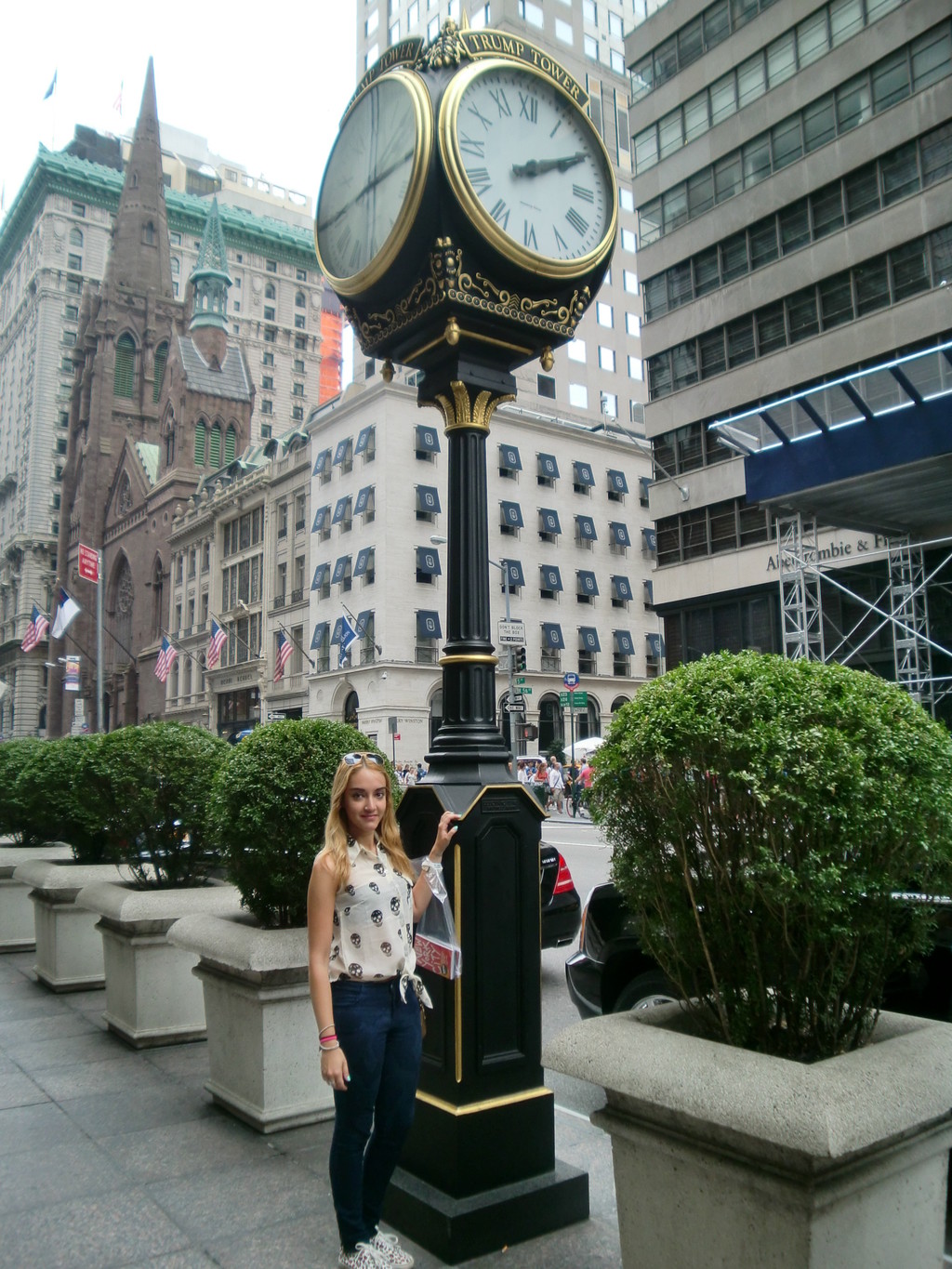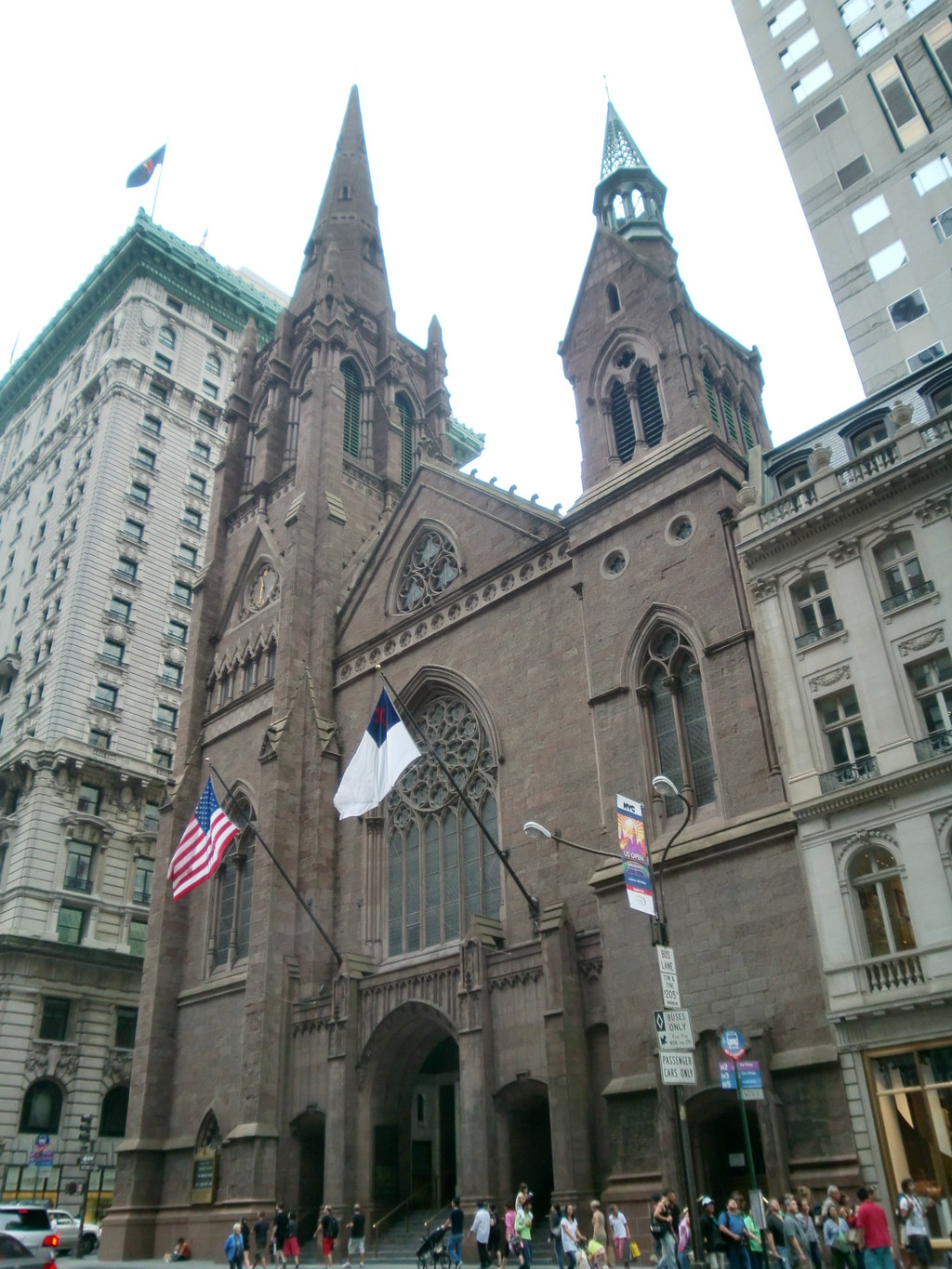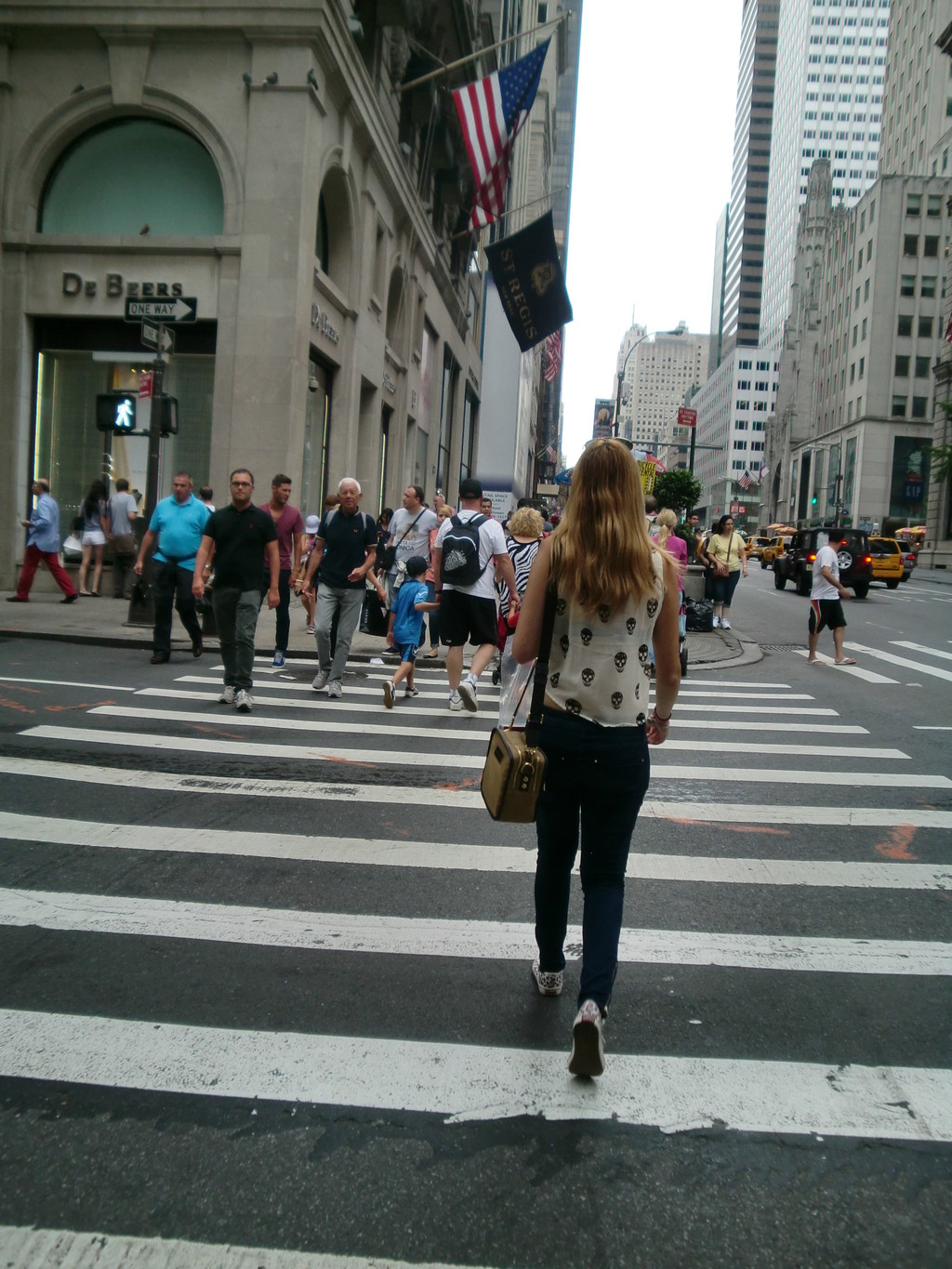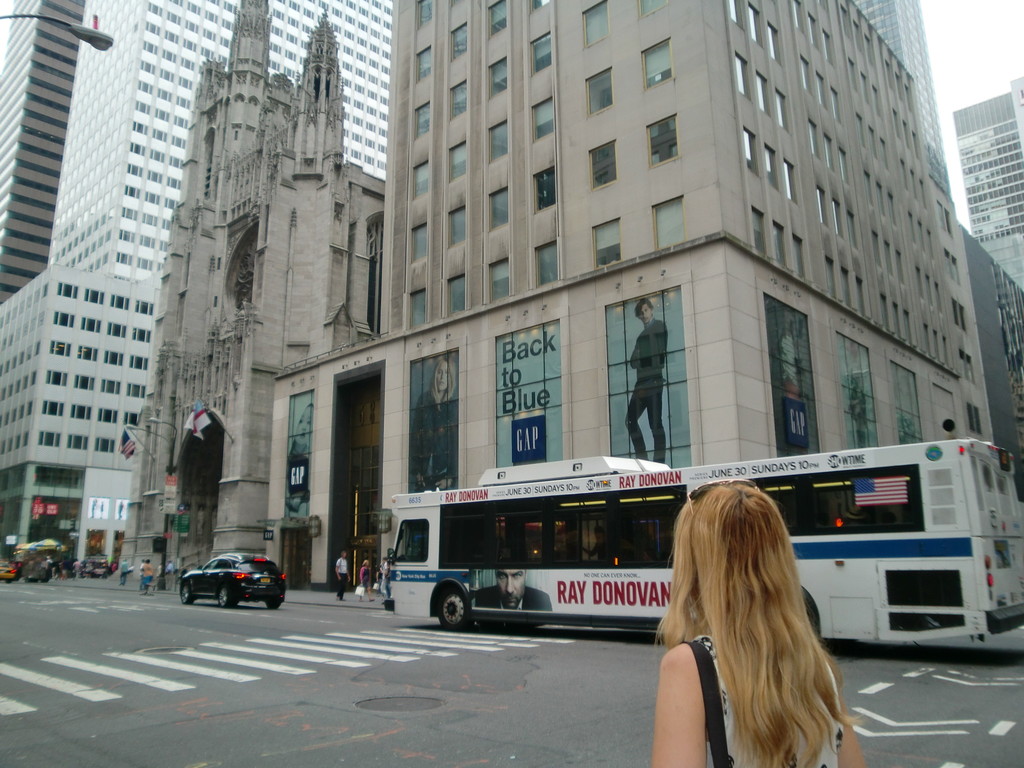Fifth Avenue

During the 19th century, the area that included Fifth Avenue and what is today the adjacent neighbourhood was known as Petersville. The northwest corner of this neighbourhood appeared in 1846 in a "Map of an estate belonging to John R. Peters, located in the city of New Rochelle", on the left. The Portman Road of today, which forms the western boundary of the study area, was labelled "Road to the Mill"; the street was known as the Mill Road, at least until 1931. Pine Brook passed under the intersection of Portman and what is today Fifth Avenue, which, in 1846, was marked, at the estuary of the intersection, as a private road. The land that is now a city park was labelled as owned by Alexander Ritchie, and the site of his house and barn. The intersection of what is now Portman Road and Fifth Avenue is indicated by an asterisk.
In 1855, much of the western part of the study area belonged to Peter Kauffman and Henry Siegel. On an 1855 map, the current Fifth Avenue was labelled "Formerly Reebers Lane, " and Pine Brook passed under two bridges at the intersection with "Old Mill Road. " The lands to the north, east and west of the Kauffman and Siegel holdings were labelled "Town of Petersville". The Fifth Avenue of today, west of the study area, was called Peters Road. The asterisk on the right indicates the same place as on the 1846 map.
In 1856, the ownership of the City Park, and is maintained today, was held by Alexander Ritchie. The lands to the east of Ritchie's property and between the study area and the New York and New Haven main line of the railroad had been subdivided. The railroad, which was completed through New Rochelle in 1848, looks like a heavy black line that crosses the bottom of the map. According to the map title, the subdivided properties belonged to an organization called the Petersville Homestead Association. Siegel and Kauffman conserved the lands in the western part of the study area. The two eastern thirds of the study area were marked "Land of Lorenz Bielm, " possibly corrupted in "Biehn, " the name of a street that is currently within the study area. Fifth Avenue was called Morris Avenue; the asterisk indicates what today is the intersection of Fifth Avenue and Portman.

Little development took place in the study area before the early 20th century. The Bromley map of the neighbourhood in 1901, shown on the right, indicates that no building had taken place in the northern and southern subdivided areas of the study area. Siegel and Kauffman's properties had been acquired by James Burns and Fred Krause, who had erected some wooden buildings and auxiliary structures on their property. Pine Brook continued to run below the irregular intersection of what is now Fifth Avenue, but back then it was known as Morris Avenue, east of Mill Road and Peters Road west of Mill. The name Petersville remained north of the study area. The asterisk indicates the same place as in the maps of 1846, 1855, and 1856.
In 1907 the lands of Bielm, Burns, and the old properties of Krause were property of Frederick Lorenzen. A map presented that year with the Westchester County Registrar called the "Quinta Park Avenue" neighbourhood, possibly waiting for the construction of the city park across the Fifth Avenue from the neighbourhood. The study area was decisively divided into lots that were as close in size to 25 by 100 feet as possible within the irregular boundaries of the site. This lot size, the standard for developers of linear houses in New York during the 19th century, indicates that Lorenzen envisaged the neighbourhood as a dense urban area. Despite the new name, the map describes the area as "part of the map of the Villa of Petersville. " Fifth Avenue had acquired its current name, and Pine Brook had been redirected, apparently, in a pipeline, which developed under the neighbourhood and the intersection of Mill and Fifth.

The neighbourhood underwent substantial changes around 1910. That year, the city of New Rochelle bought the land that would become the Park City. According to local historian Herbert B. Nichols's writings in 1938, "the park contains about 30 hectares, a part of which has been left as a natural woodland. The rest, with an adequate sports building, has been conditioned on baseball diamonds, soccer fields and a running track. " The Recreation Municipal Building described by Nichols was completed in 1923 and designed by Lawrence M. Loeb, an architect of several residences in Westchester County. The building, visible on the left, still stands, although abandoned and unused, in the Park City.
Equally significant, 1910 was the year in which the car was extended to the study area. By that time, New Rochelle had developed a sophisticated tram system that had begun in 1885 with the organization of the New Rochelle and Pelham Railway Company and the New Rochelle Horse Street Railway Company. From Park City, riders could travel down Fifth Avenue to North Avenue, where they could then take a car to the centre. A route from the main central street travelled to Mamaroneck; a connection to Mount Vernon made it possible to ride all the way to New York City. The cars were so popular and their customers were so willing to travel long distances that, according to Nichols, "The car and its connection to New York City had been ridden by local merchants for fear that shoppers could take the tram to New York instead of shopping in New Rochelle. " By the 1940s, buses had replaced many tram lines throughout the country.
By 1910, homebuilders had already begun subverting Lorenzen's neat, dense subdivision plan. The 1910 Bromley map, on the right, shows 11 wooden buildings and an auxiliary wooden structure present in the study area, all in combined lots; 146 Pleasant, for example, is tucked into the corner of what was originally planned to be three lots, and three houses on Llano Avenue share a 125-foot, or five lots, front.
The 1915 New York State Census provided an outline of the neighbourhood's population. All the houses in the neighbourhood were single family homes, and the male heads of household were mainly labourers and other blue-collar workers. Fifth Avenue residents included natives of Germany, Italy, Russia and Poland. The residents of Llano Avenue were from Italy, Scotland, Ireland, Germany, Sweden and England. Pleasant Street was entirely Italian, except for a German bookbinder, his Irish wife, and his two daughters born in the United States.
Neighbourhood properties in the area continued in the 1920s. In 1925, Rosina B. Krause subdivided her land along the east side of Mill Road near Sharot Street into 18 properties, 16 of which had 25-foot facades. Once again, however, dense development was not continued; in 1929, five of the lots were purchased by the Dairy Sheffield Farms, which erected the milk distribution centre shown on the left. The structure, which today occupies the Humane Society of New Rochelle, included, according to the 1931 Sanborn Fire Insurance Map, an office, car storage, and food storage.
In 1928, the study area was not divided into areas as a purely residential district. Those areas that were residential were divided into multiple housing areas. The whole block delimited by Fifth Avenue, Mill Road, Llano Avenue and Valley Place as area "O" or "business" area. The southern side of Llano was also divided into areas for businesses.
By 1929, the neighbourhood had swelled considerably. The property between the study area and the railroad tracks was labelled "Pelham-Port Chester Parkway", indicating the proposed route of a highway that runs from Fairfield County, Connecticut to the Bronx along the eastern part of the County from Westchester. The lands between Mill Road and the Mamaroneck city line, near the eastern part of the study area, which were never built, were acquired by Westchester County in the early 1930s. Although the green route was never built, this property was used as the right of way through the New England Thruway (the Westchester County portion of Interstate 95), which was inaugurated, in its entirety, on 15th October, 1958. East of the City Park, where the MacLeay apartments were built in 1949, there were approximately eight buildings, all constructed with wood, except for one.

In the 1931 Sanborn Map, the study area is shown to be primarily residential, with some important exceptions. Fifth Avenue, similar to the current one, had mixed commercial and residential uses, with homes interspersed with shops, courtyards with two contractors, storage areas, a metal sheets factory and a petrol station in the same location as the Citgo station today. The northern side of Llano Avenue was completely residential, except for a factory located near to Mill Road; the southern side was also completely residential, with the exception of the store, mentioned above, at 71 Plain. Pleasant Street was completely residential. Even so, the neighbourhood must have had a confusing appearance, which is similar to the current one; most of the houses had auxiliary buildings and probably had chicken coops or storage sheds. On the other hand, the large number of open lot in the neighbourhood, still present, prevented the creation of a continuous residential urban landscape.
Notable change came to the neighbourhood in 1955, when it was divided into zones such as M-1 Light Manufacturing District. Since then, residential and industrial uses have shared the study area. No new houses have been built in the neighbourhood since the rezoning, which prohibits residences, and several old houses, such as 53 Pleasant Street, have been converted to commercial use.
The buses, which took over the New Rochelle tram routes from the 1940s, turned out to be a double edged sword. Although the new air-conditioned buses initially sparked "applause from merchants and shoppers crowding on the sidewalks" to see them in the centre of New Rochelle, inconsistent service persisted, probably diminishing the attraction of the Fifth Avenue neighbourhood. The Fifth Avenue bus route extended to Valle Place in 1973, where it returned back along Llano Avenue, but this may have diminished the attractiveness of the neighbourhood. When the bus service had been extended by a mainly African-American neighbourhood in 1967, for example, a resident called it a "stab in the back to blacks, " in protest to his city councillor.
New Rochelle bus operators finally hit hard times, but in 1970, the intervention of the County Executive was necessary to avoid the termination of Sunday service along some routes in the city and, in 1974, 15% service cuts were imposed in some areas due to financial difficulties. Today, Route 61 of the Westchester Bee-Line County bus, operated by Liberty Lines, stops in City Park approximately every half hour from Monday to Friday on its way to downtown New Rochelle.
If you have liked this post, then you should read: Christmas in New York: A Complete Guide.
Photo gallery
Content available in other languages
- Español: Fifth Avenue
- Italiano: Fifth Avenue
- Français: La Cinquième avenue
- Polski: Piąta Aleja
Rate and comment about this place!
Do you know Fifth Avenue? Share your opinion about this place.



















